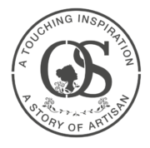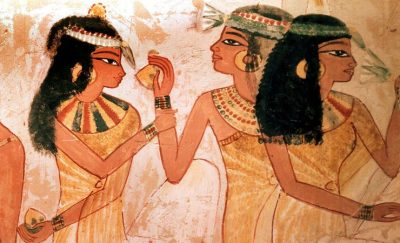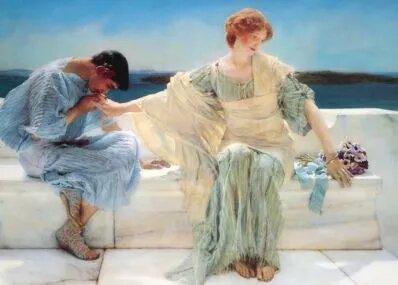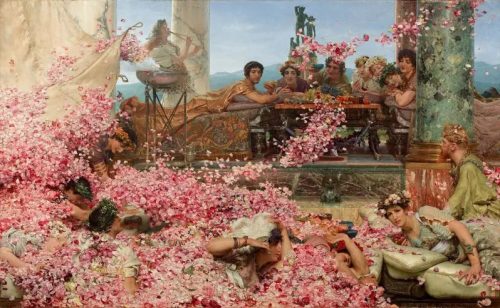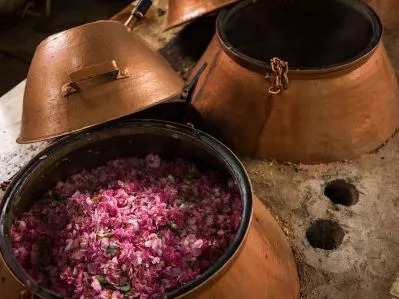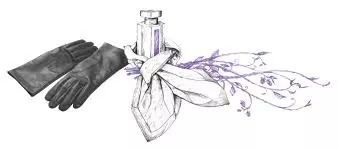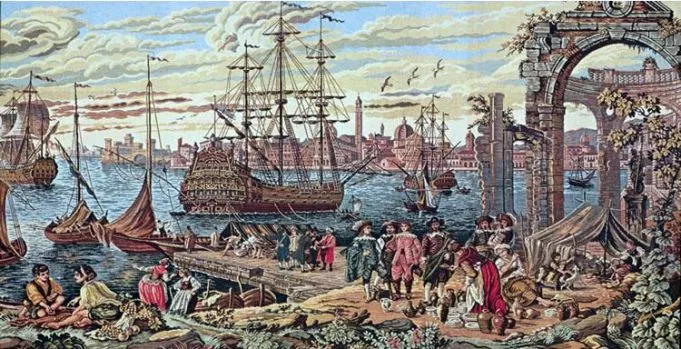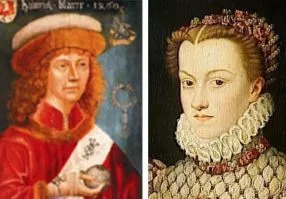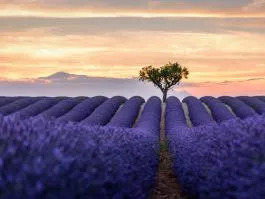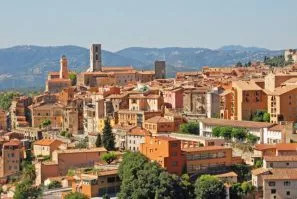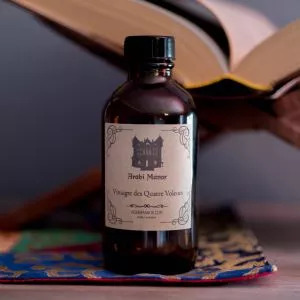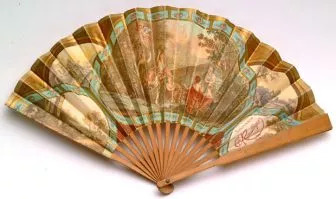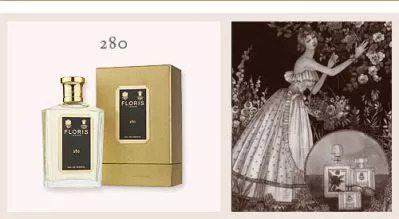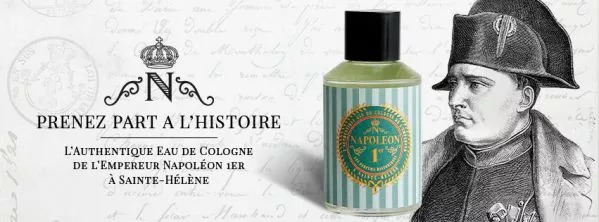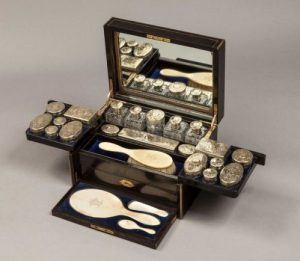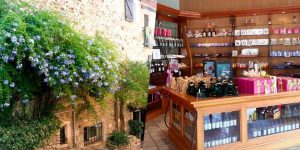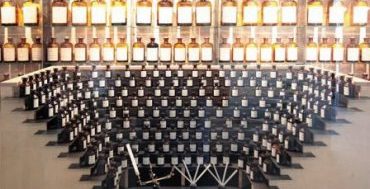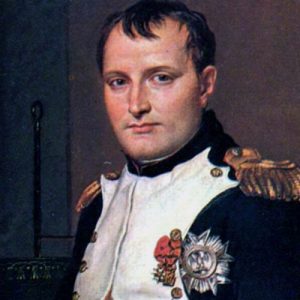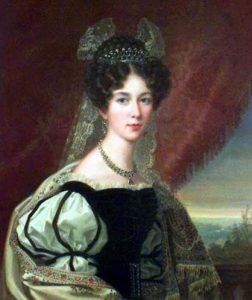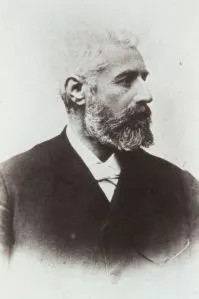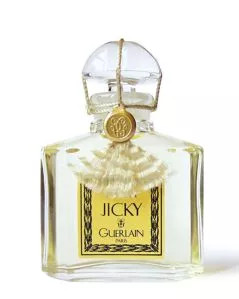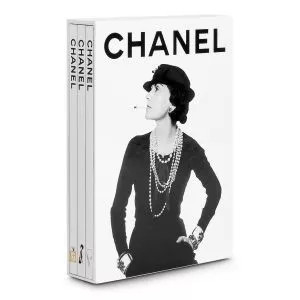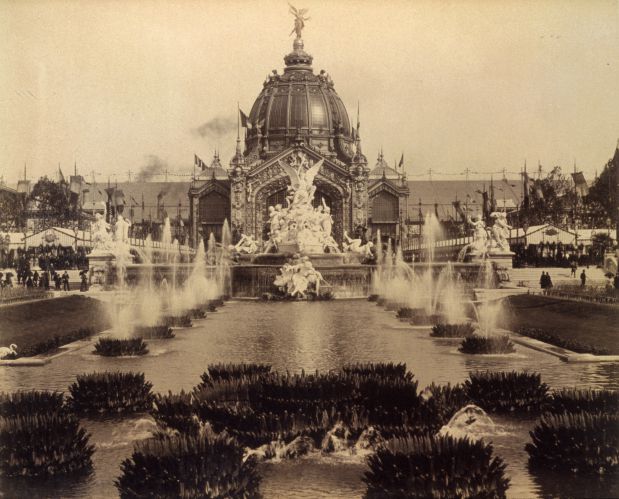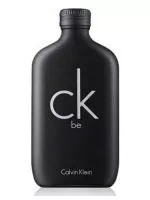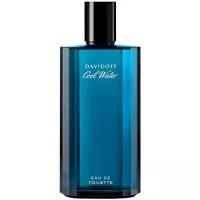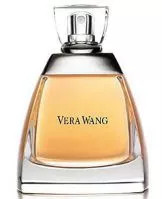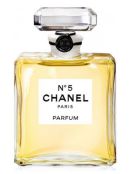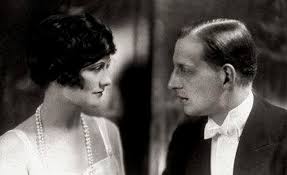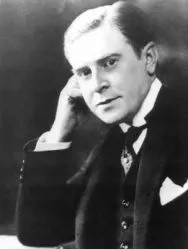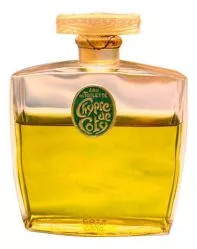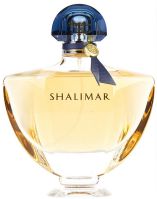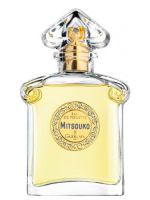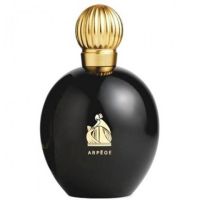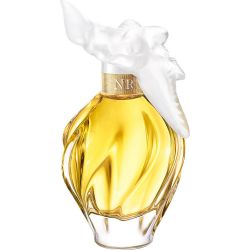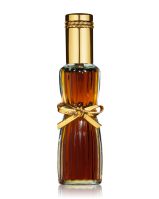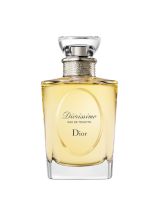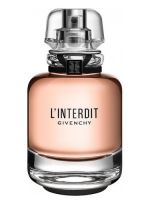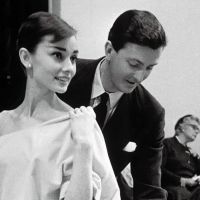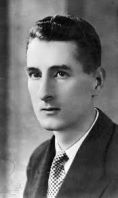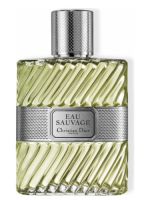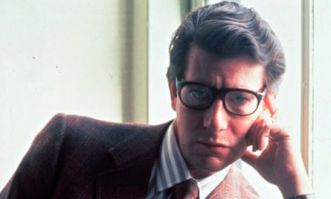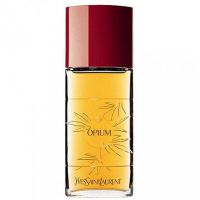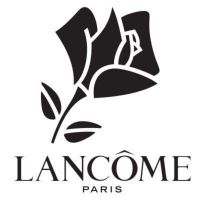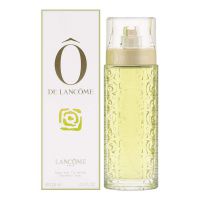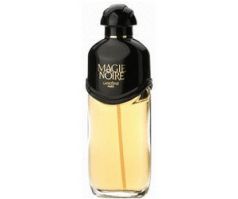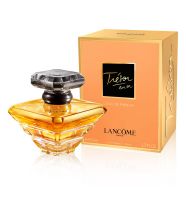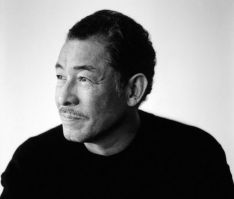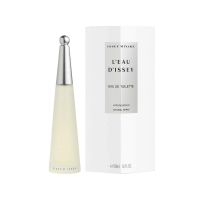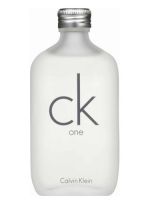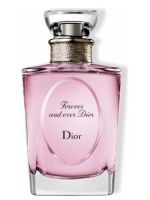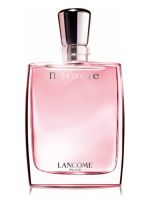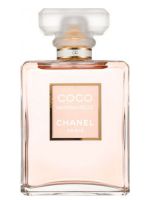The origin of perfume
The annihilated history becomes difficult to verify with the passage of time. Scholars can only anticipate the mysterious origin of perfume through fragmented historical fragments.
According to the records, the perfume was originally used to worship the gods. It represents sacred and inviolable, so average people cannot use it. In the Stone Age, people learned how to use fire. They believed that the smoke emitted by objects after burning was the connection between the gods and the earth.
The word “perfume” is derived from the Latin “Perfumum”, which means “penetrating smoke.”Even now, incense burning plays an important role in many religions, such as Chinese Buddhism and Taoism. The ancient emperors burned every sacrifice. They believed that the smoke from the sky was a way of communicating with gods. The Old Testament mentions perfume, which usually refers to a spice formation, which is consistent with the Latin definition.
Egyptian history shows that essences and ointments are used for bathing and after bathing. They are usually stored in exquisite in the container, some examples were found in the tombs of ancient Egypt. In other parts of the Middle East and the Far East, as well as China, people have already learned how to operate the fragrance of spices to achieve the pursuit of beauty.
Romans like to apply the perfume anywhere, on the horse, or even in the mortar for the wall. In ancient Egypt, it was illegal to not use perfume in public places. After the death of the ancient Egyptians, the corpse was wrapped with spices to keep it forever (dried mummies). Ancient Greek women also spilled perfume in religious ceremonies. Some people think that the Persians discovered how to extract the essence from flowers by distillation; the Arabs created a religious ritual using perfume.
It is their use of exotic fragrances that have laid the groundwork for their perfume development in the next few centuries. Asians have a major influence on the development of perfumes. They believe that perfumes not only make people more beautiful but also help people live longer. Later, with the decline of the Roman Empire, the development of perfume also divided into two different areas.
On the one hand, the German priest invented the distillation technique; on the other hand, the perfume kingdom-France imported unique fragrances from the East, discovering the aromatic characteristics. As a result, European perfume technology began to enter a prosperous period.
Ancient Egyptian perfume history:
The ancient Egyptians were the first to use perfume for personal pleasure. At the beginning, perfume was only allowed to be used by priests, and only priests could participate in the process of making perfume, so many temples at that time had special perfume laboratories. Later, Egyptian kings and queens also began to enjoy perfume. When they died, people would make their bodies into mummies and wrap them with spices made from myrrh and cinnamon. For a long period of time after that, only prominent people were eligible to decorate their tombs with perfume.
In 1992, when an archaeologist opened the pyramid tomb of Tutankhamen, an Egyptian pharaoh, he discovered his mummy and found several oil pots around him to store essential oils.
In 40 BC, during the reign of Egyptian Queen Cleopatra VII, the use of perfume reached an unprecedented climax, She often even uses 15 different fragrances and sesame oils for bathing, and even soaks her sails with perfume. When her regime began to disintegrate, she relied on beauty, using a large number of perfumes to lure the Roman emperor Julius Caesar and obtain their military help. When she died, Egypt’s fanatical worship of perfume also came to an end.
Ancient Greek perfume history:
The perfume was brought to Greece through the Phoenicians. Greece controlled the trade along the Mediterranean after Egypt lost its dominant power. At that time, there were a large number of female perfumers in Greece who improved the perfume manufacturing technology in Egypt.
Ancient Greek nationals consume a lot of perfumes every year and have the habit of using different perfumes in different parts of the body. The Athens politician and lawmaker at the time, Solon, believed that the use of perfume by the nation was rampant, and passed legislation to prohibit the free sale of perfume.
But he did not succeed, perfume is still the most popular product. Because people loved jasmine at that time, jasmine was also established as the national flower of Greece.
Roman perfume history:
Influenced by the central and eastern regions and Greece, the Romans also began to indulge in perfumes. In the early days, the Roman Empire only allowed perfumes on two occasions-religious activities and funerals of prominent people. During the reign of the Roman Emperor Nero, the use of perfume reached a frenzied stage. When Nero’s most beloved pope died, he used incense that was larger than the total amount of Arab shipments in a year.
The Romans were skilled in the creation of perfumes, and the use of perfumes was completely uncontrolled. They spray perfume on the floor and walls and even use perfume on their horses and dogs. At some banquets of high society, perfume fountains are even seen.
Ancient Arabian perfume history:
The rise of Christianity greatly inhibited the use of perfume. Not only has daily use been drastically reduced, it even spread to the original religious customs. Christianity believes that perfume is a product with no practical use. However, the Arabs have maintained the habit of using perfume. The believers of Mohammed, the founder of Islam, love the smell of musk, roses, and amber. They even mixed these spices with the cement used to build the palace, which gave the palace a strong and lasting fragrance.
One of the most important inventions in the history of perfumes originated in the 10th century: the invention of the distiller has greatly improved the perfume manufacturing process-the the distillation method. Since then, a large area of land in Persia has been used for planting roses and transported to Baghdad in Arabia through trade, with the purpose of refining rose oil, and Baghdad has thus become the “capital of fragrance”. In the 12th century, the Arabs discovered that dissolving the essence in alcohol can slowly release the fragrance, and some concentrated essences are better preserved by alcohol.
old perfume distiller
11th~16th century history: Leather Gloves and The Black Death
Background:
The demise of the Roman Empire, the invasion of barbaric tribes, and endless wars brought European countries into a dark historical period, and perfumes also lost their original status.
This situation did not change until the resurgence of trade in the 12th century. Due to the rise of universities, the improvement of alchemy, and the distillation method inherited from the Arabs, the perfume manufacturing process has been greatly improved.
Incense and myrrh are still the most commonly used spices in religious activities. In some religious ceremonies, people use small brushes to spray perfume on clothes or walls.
Story 1: Leather gloves and perfume
In 1268, the leather gloves industry in Grasse, France developed rapidly, and the finished products were exported to other countries. Because the leather manufacturing process requires the nitrogen-containing industrial waste, and the finished product has an unpleasant smell, it is necessary to add essential oils of aromatic plants such as lavender, rosemary, and sage to deodorize.
In addition to the traditional distillation method, the Glass people also invented the Enfleurage method for extracting essential oils. Therefore, the pioneering work of adding fragrances to leather gloves is of great significance to Grasse and the development of the entire French perfume industry.
medieval shipping port
Story 2: The Black Death and perfume
The Black Death broke out in 1348, which lasted about 400 years, and slowly disappeared after 1679. During this period, it was a terrible dark world for Europeans. About one-third of people in Europe die from the Black Death.
The doctor at that time believed that the Black Death was spread by air, it was recommended to wear thick clothes to prevent the air from contacting the skin as a first line of defense. The second line of defense is not to take a bath, so that dirt on your body can plug your pores.
It sounds ridiculous now, but this misunderstanding was not lifted until the 19th century, and Europeans usually did not take a shower during these 500 years. French King Louis XVI took only two baths a year. It was recorded in the travel guide of the 18th century that half of the population in Paris had never taken a bath in their lifetime and the body smelled very bad.
the black death and perfume
It was found that when the Black Death raged, the people who made perfume seemed to have never been ill. In the 17th century, there was a small town called Berklesber in England, which was a lavender trading center. Because of the fact that the Black Death is spread by fleas, and lavender has a natural anthelmintic effect, so no one in the town suffers from Black Death.
It is precisely because of the above facts that the novel spice-preserving vessel was born in that era, called the “incense box”, used to preserve musk, amber, rosin, lavender, and other essential oils. In this vessel resembling an iron ball, there are small holes for scenting.
Fragrance can drive off the Black Death and some other epidemics. These incense boxes also indirectly created today’s aromatherapy, and its effects include promoting digestion, increasing libido, and so on.
In addition to avoiding some infectious diseases at the time, perfume can also cover up the smell including body odor caused by not taking a bath, and bad odor emitted from the urban environment. The urban drainage system in Europe benefited from the ancient Romans who were highly skilled in engineering. However, with the decline of ancient Roman civilization, the sanitary status of cities across Europe quickly fell to the original state until the 19th century.
In the long years, European cities were incredibly dirty. Paris, which has a large population, is even more typical. Paris residents treat streets and squares as dirt dumping sites, waiting for garbage to be washed into the river by rain. The residents in the building simply dumped the manure and garbage directly through the windows, and the streets were often filled with manure and odor.
In this kind of odor-attack, the French nobility and the upper class began to widely use perfumes, and peripheral products such as sachets and powders also showed stable growth.
The birth of a new perfume:
In the second half of the 14th century, a new type of perfume mixed with alcohol and essential oils was born, which was called “toilet water” at that time.
Here is a story about the perfume of the Queen of Hungary. This folklore tells that Queen Elizabeth of Hungary was 70 years old and was in very poor physical condition. A monk gave her a bottle of perfume. After the queen used the perfume, all the persistent diseases were healed and regained her youth. Even the king of Poland began to propose to her.
Due to the discovery of the new continent of the Americas in the 15th century, Venice lost its original status. The trading volume of spices in Spain and Portugal increased accordingly. The Netherlands was the country with the fastest development of perfume technology during this period.
Not only did they get involved in international trade, but they also protected their spice industry and improved their farming techniques. This has led to a significant increase in the production of perfume in the Netherlands, while the perfume they produce (toilet water) has changed the single characteristic of the past, using a large number of mixed spices to make perfumes, including flowers, herbs, musk, and amber.
Industrialization of perfume:
The industrialization of perfume began in the 16th century. At that time, the Italian princess Catherine de Medici came to Paris from Italy, married French King Henry II of France and became Queen of France. She brought Italian fragrances and even fashion trends to France, and her royal perfumer Rene le Florentin also came to France and opened a perfume shop in Paris. For a time, perfume gloves became a must-have item for ladies and wealthy men in Paris. Everyone began to love leather gloves soaked in perfume.
The best perfume gloves come from Grasse, France. This French city has also prospered due to the trade of perfume gloves. Its unique natural environment is also particularly suitable for growing various spices, so it has become a large spice cultivation base. Now brands like Chanel and Guerlain, which pay special attention to the quality of the perfume, have their own exclusive plantations in Grasse, used to cultivate various precious spice plants.
Catherine de Medici and Rene le Florentin
Grasse Lavender
Old Town Grasse
In the 17th century, the world’s perfume industry achieved great success. People were crazy about perfume, so that the problem of body odor caused by not taking a bath no longer exists. The glove industry flourished under the leadership of Louis XIII. Glove chambers and perfume manufacturers were established. Then Louis XIV brought together a group of pharmacists, distillers, alchemists and chemists to monopolize the perfume industry.
Jasmine flowers, roses and many bulbous plants are used as spices to expand into the raw materials of perfumes, enriching the fragrance of perfumes. Various perfume bottles have also become abundant. Incense boxes are increasingly used, and this habit has been retained until the end of the 18th century. Many pear-shaped transparent glass bottles and crystal bottles have also been put into use. In the Baroque period, a collection of strange-style perfume bottle collectors emerged.
Perfume history of 17th~18th century
Story 3 : Vinaigre des quatre voleurs and perfume fan
The French Revolution was the era of philosophers and perfumes. The palace of Louis XV has a name called the perfumed court.People spray perfume on fans, furniture and clothing every day. Even if the disinfection function of vinegar is better, people are still more inclined to rely on the insect repellent function of perfume in the prevention of black death.
In 1720, the Black Death was rampant again, and the “vinaigre des quatre voleurs”(four thieves vinegar) was one of the magic perfumes that emerged at the time. The “vinaigre des quatre voleurs” comes from the United Kingdom. It was originally created by four thieves to prevent their family members from being infected with the Black Death. Later, the recipe was strictly kept secret, and only a few witches knew it.
Because of the protection of the “vinaigre des quatre voleurs”, the four thieves stolen the property of those who died of the Black Death without being infected. When they were arrested, they exchanged their personal freedom with the formula of the Four Thieves Vinegar. The next day, the recipe for the Four Thieves Vinegar was made public, which may also be the way people resisted the Black Death at that time.
four thieves vinegar
Perfume Fan (éventails):
From the 17th century until the rise of spray-type perfume in the second half of the 19th century, fans (éventails) were often used to diffuse perfume scent. The texture of the fan is very suitable for absorbing perfume, which can keep the fragrance on the fan for a long time. And the process of using the fan is also suitable for emitting fragrance.
Later, the emergence of perfume sprayer replaced fans, and people no longer use fans to diffuse fragrance. And the fan has finally developed into a display tool in the perfume shop, which is equivalent to the fragrance test card of the counter today.
Perfume Fan
The rise of cologne:
The true revolution of perfume began in the 18th century. The progress of the world’s perfume was accelerated by the invention of Eau de Cologne. This refreshing perfume has a wide range of uses due to its natural fragrance and alcohol, and no other toxic ingredients. In addition to the use of ordinary perfumes, it can also be used for bathing, mouthwash, drinking with red wine or sugar, or for simple disinfect.
Eau de Cologne-18th century
The origin of cologne is a very controversial topic. If you discuss it in detail, you can write the thickness of a book. One of the interesting stories is about the struggle between the two big families of Feminis and Farina. Emily of the Farina family invented a new fragrance, which would have been named “Eau de Bologne”.
The most accepted version of the story originated in the 14th century and was about a nun at the Abbey of Saint Mary in Florence, Italy. This nun developed a bottle of perfume called “Acqua de Regina”(Queen’s Water). This bottle of perfume was so famous in the 17th century that even a member of the Fimini family, Giovanni Paolo, tried to seduce the dean of the convent to explore the formula of the perfume. Givenchy is a pharmacist in Cologne City, he hopes to start this perfume business as soon as possible.
This bottle of perfume was originally renamed “Eau Admirable” and later was renamed today’s “Eau de Cologne”. In 1766, the Fimini family invited their cousin family in Italy to expand the perfume business together. In 1806, Jean Marie of the Farina family once concealed his true identity in Paris as a perfumer. He is very talented in perfumery and sales of perfumes are also very good.
Later he sold the cologne brand to the company founded by Armand Roger and Charles Gallet, and their company Roger & Gallet made high-quality perfumes and perfumed soap which is still available today. In 1865, in Cologne Town alone, 39 perfume boutiques with cologne logos could be found.
Napoleon is the largest consumer of cologne. He likes to bathe in cologne or mix it with sugar for drinking. It is said that he uses 5 kg of cologne every day.
a cologne brand named-“Napoleon Ier”
Another version of the story about cologne originated in the city of Cologne in 1792. At the wedding of the son of the banker Moore Hens, William, a monk used the form of a sheepskin roll to “l’acqua
Marabilis”(extraordinary water)s perfume formula was given to the couple. The couple started to officially sell this perfume after their wedding, and they named the perfume 4711 cologne.
Two centuries later, the 4711 cologne is still on sale. It is in charge of Ferdinand, a descendant of the Muerhens family, without interruption.
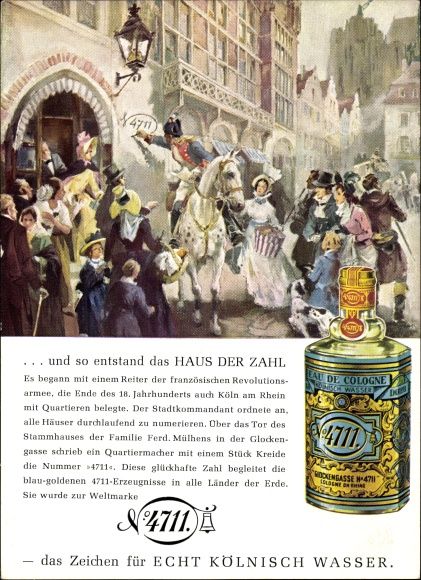
4711 cologne
The new look of perfume bottles:
From the beginning of the 18th century, different types of perfumes will be equipped with different bottles. In France, because the Baccarat factory was devoted to producing all kinds of glass perfume bottles, glass was very popular in the perfume industry at that time. The glass factory in Saint Louis also played an important role in the development of perfume bottles, and crystal glass has been popular since then. Some high-end perfume bottles are made of gold and silver and embellished with crystals and jade.
The design of the bottle at that time deviated from the previous Baroque style, returned to nature, simple and fashionable, and was well received by Rousseau. At that time, a number of excellent porcelain perfume bottles emerged, usually decorated with gold and made into pear shapes. Porcelain is usually sold by Germans, Austrians, and British. Wedgwood (Wedgwood) invented the blue and white porcelain, the first European appearance of this porcelain perfume bottle.
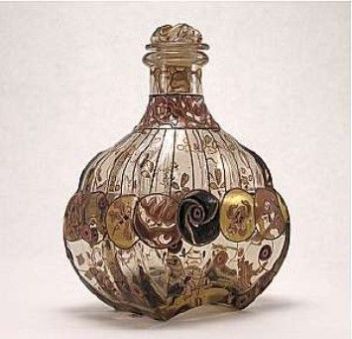
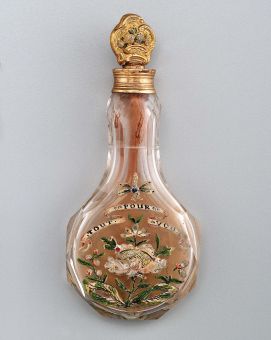
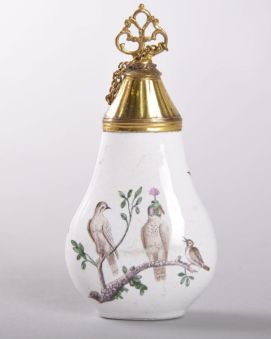
Judging from the patterns of the porcelain perfume bottles, most of them were flowers, fruits, wars and some oriental illustrations, which showed people’s love for the Rococo style at that time. There have even been human-shaped perfume bottles, mainly used to depict comedy art.
In the 18th century, toilet bag was put into use. The bag contains small bottles for different perfumes. This perfume bag is widely used, and can also be used to hold toothbrushes, pencils, cotton swabs or funnels.
toilet bag of 18th century
The capital of perfume-Grasse:
The love of perfumers for Grasse in France has made Grasse quickly become the largest fragrance production base in the world, especially jasmine, roses, and various citrus plants. Due to the tannery and perfume glove merchants, Grasse has become a chapter in the history of perfume.
In 1724, the perfumers of Grasse began to use perfumes to make perfumes. Since then, the relationship between Grasse and perfumes has been permanently determined.
By the mid-18th century, Grasse had become the world’s first and largest base for fragrance cultivation and essential oil extraction. Galimard is the largest manufacturer of perfumes and fragrances in Grasse, providing fragrances, balsams, olive oils and other fragrances for King Louis XIV and Louis XV.
Other local perfume manufacturers are also maturing, and their production tends to be large-scale, meeting the needs of the growing market. Paris then maintained close trade relations with Grasse, making Grasse the perfume capital of the world.
A glance of Grasse
Grasse Perfume
Perfume history of 19th century
In the 19th century, due to the development of the modern chemical industry, people’s olfactory preferences changed accordingly, resulting in a complete change in the entire perfume industry. This trend has been maintained to this day. The French Revolution could not eliminate people’s follow-up to perfume. There was even a perfume called “Parfum a la Guillotine”.
During the French cabinet (1795-1799), people have begun to dare to display luxury goods, including the use of expensive perfumes. During the reign of Napoleon, he encouraged using perfume, Napoleon and his ministers are avid fans of perfume. Queen Josephine (Josephine), very fond of strong perfume, so it has the nickname “Muskfool”.
napoleon
josphine
Her bathroom is filled with strong musk, vanilla, and amber flavors every day so that she can still smell the scent after 70 years. She has two beloved perfumers Lubin and Houbigant, and she has invested countless amounts of money on these two.
His husband Napoleon sometimes could not bear such a strong scent and had to leave the bedroom and choose to sleep in another room. But he himself is the ultimate lover of cologne, and he will let his servants wipe the cologne made by Jean Marie Farina on him every day. The perfumer specially created a small perfume bottle for Napoleon, which can be put into his boots. He consumes 60 bottles of cologne every month.
According to him, perfume can not only stimulate his brain but also affect his relationship with the queen. This can be observed in the letter he saved with the queen-“Honey, don’t take a shower, I will come back as soon as possible.”
During the restoration of the French king’s government (1815-1830), the perfume industry was a relatively slow development stage. People tend to use perfumes that are softer and more lipid. During the reign of Louis XVIII, the prevalence of these two perfume “les larmes de l’aurore”(tears of dawn) and “De l eau des Belles”(beautiful water)proved this point.
The rise of the Guerlain Empire:
In the history of perfume, one person created a perfume empire, this person is Pierre François Pascal Guerlain, a doctor and chemist, opened his first Guerlain perfume store in Paris in 1828, selling perfumes and perfumed powders. “Eau de Cologne Imperiale” was famous and was awarded the title of “Royal Supplier” by Queen Eugenie.
Aimé Guerlain
Jicky Guerlain
The revolution of synthetic fragrance:
The greatest contribution to the perfume industry in the 19th century came from organic chemistry. Organic chemistry provides researchers with the ability to separate odors into molecules for individual research and to imitate them through artificial synthesis. Therefore, perfumers can no longer be constrained by nature and can create any charming new scent regardless of imagination.
Perfume bottles also have not escaped from industrialization, and crystal is still the favorite material of people: Bohemia, France, and Britain all have high-end bottle making processes. And all of these contributions can’t compare to the influence of one thing on the history of perfume, that is, the distiller. Every one of us who loves fragrance should thank its inventor.
In 1874, the first man-made organic fragrance “vanillin” was released, with a vanilla scent and milky scent, and also to enhance and stabilize the aroma in perfume manufacture. This has greatly accelerated the process of perfume industrialization, making large-scale mass production of perfumes possible. While reducing the cost of perfume, it also gives ordinary consumers the chance to use perfume.
Due to its low price, synthetic fragrances have a certain impact on the cultivation of traditional natural fragrances. With the continuous advancement of technology, more and more natural fragrances are found to be replaced by cheap synthetic fragrances, which is one of the reasons why perfumes will continue to be revised. It can be said that today’s perfumes cost a lot less than before, but the selling price remains the same, so the profit per perfume is much higher than before.
Perfume classification:
At the end of the 19th century, Eugene Rimmel tried to divide various perfumes into 18 categories (like sandalwood category includes sandalwood, vetiver, and fir). It is difficult to classify all fragrances. Because it is not easy to describe a fragrance accurately, this classification method was not widely used in the end. His company is still engaged in cosmetics manufacturing now.
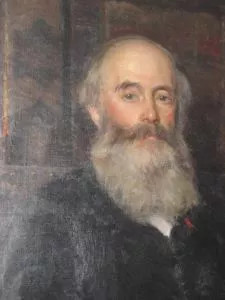
Eugene Rimmel
At about the same time, another perfumer Charles Piesse. Try to classify perfumes by corresponding scales. He believes that the classification of perfumes should have its own order like the tone of music. This method was not successfully promoted in the end, but some terms related to music have been retained until now, such as the term Accord, which means “harmony” in music.
20th century: the combination of perfume and fashion
In France at the end of the 19th century, nearly 2,000 people were engaged in the perfume industry, and one-third of the perfume produced would be exported for sale.
With the advent of the Industrial Revolution, the middle-class people suddenly became rich, and they discovered that perfume, which was originally only aristocratic, could also be industrialized. The important reason for this change is the development of chemistry. With them, perfumes can be produced on a large scale, but perfumers also need to master more chemical knowledge.
A new wave of marketing:
The French Exposition Universelle in 1900 became an important event in the history of perfume. The perfume pavilion at the expo was gorgeously decorated, with a large fountain in the center, surrounded by various perfume exhibitors. Exhibitors invited famous artists at the time to design and decorate their booths. The famous designer Hector Guimard has designed eye-catching perfume bottles for perfumer Mailot.
Fountain Coutan and the Central Dome, Paris Exposition, 1889
Calvin Klein
Davidoff
Vera Wang
Chanel No. 5
Coco Chanel and Ernest Beaux
These chemical components like aldehydes are usually the main part of perfumes. Not only can they enrich the flavor of perfumes, but also make all the components in perfumes have better compatibility and lasting fragrance. They often appear as a fixative.
With the development of science and technology, the application of these high-tech products is more and more, but aldehyde has to be mentioned. It is extracted from alcohol or natural plants. Aldehydes have many uses: for example, they simulate the flavor of hawthorn or violet. They can also make perfumes distinctive. When you use them, you must be very careful and control the dosage. A bit of the original liquid accidentally dropped on your body will make people smell bad.
The birth of the Chypre:
Perfume manufacturing technology has also been greatly improved during this period. Francois Coty is the first to mix natural fragrance and synthetic fragrance to make perfume. His perfume, L’Origan by Coty, was born in 1905 and was the first modern perfume known worldwide.
In 1917, he created Chypre, which was later known around the world for its novel formula and unique scent. People defined “Cypre” as a new member of the fragrance family.
Chypre usually contains oakmoss, lavender, patchouli, bergamot, and some spices with oriental withering characteristics, it smells soft, spicy, and sexy.
Francois Coty
Chypre de Coty
Flowers blooming in the new era:
1920s
The 1920s can be described as the golden period of perfumes. In addition to “Chanel No. 5”, Guerlain’s “Shalimar” and “Mitsouko”, Lanvin’s “Arpege” and other classic brands became famous. After the First World War, women’s social status has greatly improved, they are more open and aggressive than before and know how to defend their rights, and they are naturally dressed up to attract members of the opposite sex. Perfume is definitely a powerful weapon.
The perfume of that era exuded a gorgeous floral scent with a romantic atmosphere.
Shalimar
Mitsouko
Arpege
1930s
Black-and-white movies were created in the 1930s, and the world economy entered the Great Depression. Everyone went to the cinema to escape reality and looked for hope from dreams. Women prefer to seek pleasure from perfume, and the “Joy” produced by Jean Patou is exactly what they want. It expresses people’s desire for hope and joy under the economic panic.
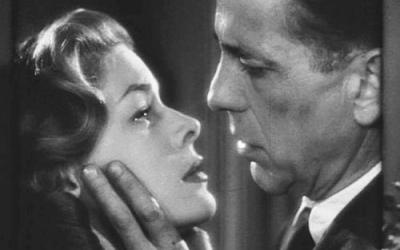
1940s
After the Second World War in the 1940s, people can finally regain their joy, and people’s nature was released. The perfume of this era is very feminine, and the design of perfume bottles embodied the female figure.The “L’Air du Temps” launched by Nina Ricci in 1948. The shape of the double-pigeon wings on the bottle not only symbolizes people’s euphoric mood of peace after the war, but also becomes a beautiful testimony of love.
L’Air du Temps
1950s
In the 1950s, the French fragrance industry reached an unprecedented peak. Following Chanel’s successful connection between fashion and perfume, Jean Patou, Worth, Lanvin, and other major fashion giants began to follow suit one by one.
The social situation is also more stable, and women have to work harder because they have to balance career and family. Their craving for perfumes has also become stronger, and perfumes are still a luxury before the 1950s.
The American Estee Lauder, after hard thinking, launched “Youth-Dew” with a cheaper price perfume, but has a higher concentration of fragrance, became popular in the market.
In 1955, Christian Dior launched “Diorissimo”, the first time to use lily of the valley as the main material, is the first perfume for pure girls.
In 1957, Givenchy founder Hubert De Givenchy also created “L’Interdit” for his girlfriend Audrey Hepburn.
Youth Dew
Diorissimo
L’Interdit
Audrey Hepburn & Hubert De Givenchy
1960s
In the 1960s, perfumer Edmond Roudnitska first applied the compound “Hedione” to his work-“Eau Savage”, and it triggered a new revolution. During this period, men’s perfumes became very popular, and the introduction of foreign perfumes also made the competition in the French perfume market more intense.
Edmond Roudnitska
Eau Savage
1970s
In the early 1970s, fashion designer Yves. Saint Laurent traveled to China and was attracted by oriental style. And finally, he created “Opium”.
This perfume inspired by the snuff bottle has a poppy pattern carved on the bottle. And it is filled with a mysterious and gorgeous oriental spicy fragrance that is full of temptation and sinking.
Once launched, it caused a topic and was full of controversy. However, this is not important to Mr. Saint Laurent, because he is convinced that the Opium’s captivating charm has unstoppably conquered women.
Edmond Roudnitska
Opium
1980s
“Beautiful” created by Estee Lauder in the 1980s represents the most touching wedding vows. Every bride is the most shining queen at the wedding. At such a time full of romance and love, every woman is stunningly beautiful!
The bride has always been the main character in the advertisement of “Beautiful”, because it wants to be the most memorable parfum in one’s life. Ms. Estee Lauder once said that Beautiful’s creative inspiration stems from the best and most touching memories of her life.
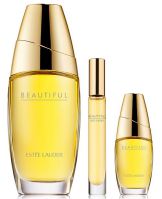
Beautiful
1990s
The most famous perfume in the 1990s is “Tresor”. For Lancome, perfume is not only its history, but also the origin of its logo of rose. In the past, Lancome’s perfumes were only “O de Lancome”(Eau de Parfum)and “Magie Noire”(Eau de Toilette).
In 1990, Lancome decided to launch a parfum that fully interpreted the image of Lancome. Of course, roses are the indispensable main inspiration of this eau de parfum. The sweet scent of Tresor symbolizes love and happiness.
Lancome
O de Lancome
Magie Noire
Tresor
Issey Miyake
L’eau d’issey
In the 1990s, unisex cologne rose from then on, and the star among them was CK One in 1994. Gender is no longer a barrier to design. Whether it is a woman or a man, they just want to be themselves. Unisex cologne rises in such a background.
CK One is an Eau de Toilette that can be used by everyone, it is no longer limited to a certain social class. The extremely simple frosted glass bottles and aluminum cans, recyclable materials, boldly challenge the rules of the perfume market. Like the seemingly decadent, careless young people in the advertisement, CK One’s best-selling reflects the fast-changing world. CK One is a simple product that meets everyone’s needs and is readily available.
CK one
The 21st century-the latest perfume trends
The 21st century is a time to show individuality. In the 21st century, people are not only independent but also have a passion for life. Perfume is still very popular, and people choose a perfume that suits them better than follow the trend. The popular fragrance also regains its spicy and rich fragrant character.
“Forever and Ever”, Dior’s latest fragrance, it is designed for those who are afraid of being forgotten, who are in pursuit of romance, who are idealistic and sentimental. The warm melon fragrance mixes vanilla, musk, and amber, touching the deepest part of the senses.
Lancome “Miracle”, the rose color of perfume symbolizes the morning glow and the sky when the sun rises, and the top note of the perfume is fresh and fruity; the middle note as the spirit is the invigorating smell of early morning; the end notes are amber, musk, and jasmine.
The masterpiece of neo-feminism, “COCO Mademoiselle”,its fresh and precise floral notes, outlines a decisive, confident and charming young woman, splendid and attractive, with artistic, intellectual and absolutely sexy.
Forever and Ever
Miracle
COCO Mademoiselle
